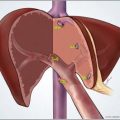Understanding core signaling pathways in hepatic carcinogenesis has brought about a new era in the management of hepatocellular carcinoma. Sorafenib was the first molecular targeted therapy to be approved for advanced hepatocellular carcinoma and is the benchmark for all other therapies. Cytotoxic chemotherapy remains the mainstay treatment of advanced cholangiocarcinoma and there are no US Food and Drug Administration–approved molecular targeted therapies. If clinicians are able to minimize the toxicity of therapy by targeting the driving mechanism of cell proliferation, they will be able to significantly improve the survival and quality of life of patients.
Key points
- •
Hepatocellular carcinoma is the second most deadly cancer in the world.
- •
Sorafenib is the most active systemic therapy for hepatocellular carcinoma.
- •
Gemcitabine and cisplatin chemotherapy remains the standard treatment of cholangiocarcinoma.
- •
Significant progress has been made in understanding the signaling pathways that are important for carcinogenesis, leading to promising clinical trials.
Scope of the problem
The development of liver cancer is a growing problem worldwide. In the United States, the incidence rate increased by 4% from 2006 to 2010 and there will be an estimated 33,190 new cases in 2014. Liver cancer can arise from hepatocytes leading to hepatocellular carcinoma or the intrahepatic bile duct leading to cholangiocarcinoma. The management of these patients requires a multidisciplinary team involving surgeons, gastroenterologists, radiologists, and oncologists in order to achieve the best outcome. This article reviews the chemotherapy treatment options.
Scope of the problem
The development of liver cancer is a growing problem worldwide. In the United States, the incidence rate increased by 4% from 2006 to 2010 and there will be an estimated 33,190 new cases in 2014. Liver cancer can arise from hepatocytes leading to hepatocellular carcinoma or the intrahepatic bile duct leading to cholangiocarcinoma. The management of these patients requires a multidisciplinary team involving surgeons, gastroenterologists, radiologists, and oncologists in order to achieve the best outcome. This article reviews the chemotherapy treatment options.
Hepatocellular carcinoma
Introduction
Worldwide, hepatocellular carcinoma remains a significant problem with more than 745,000 people succumbing to the disease each year. This carcinoma is the second most deadly cancer behind lung cancer, with most cases occurring in east Asia and sub-Saharan Africa. In the United States, approximately 27,000 cases of hepatocellular carcinoma are diagnosed each year and the numbers are expected to increase. The geographic variation of the disease is probably caused by the regional variation of exposure to hepatitis. In the Asian countries, hepatitis B is endemic with vertical transmission from parent to child. Aflatoxin, a mycotoxin produced by Aspergillus flavus and Aspergillus parasiticus , also plays a major role in developing countries. It commonly contaminates stored corn, peanuts, and soybeans in high-humidity areas and hepatocellular carcinoma often develops in younger individuals because of exposure at a young age. In the United States, most cases develop from hepatitis C or alcoholic cirrhosis resulting in cancer at a later age, and nonalcoholic fatty liver disease is a growing problem.
Molecular Biology of Hepatocellular Carcinoma
Understanding the biology of the cancer is essential to help guide treatment. The development of cancer is a multistep process involving mutations of tumor suppressor genes or mutations leading to constitutive activation of signaling pathways. A complete discussion of the pathways is beyond the scope of this article but one of the most important pathways involved in hepatic carcinogenesis is the Ras/Raf/MAPK (mitogen-activated protein kinase) pathway. Binding of epidermal growth factor, platelet-derived growth factor, or vascular endothelial growth factor (VEGF) to cell surface receptors leads to a signaling cascade activated by the Ras family of proteins ( Fig. 1 ). Because of its importance in regulating cell proliferation, this pathway represents a potential target for therapy.
Sorafenib
Sorafenib is a multikinase inhibitor that targets the serine-threonine kinase Raf-1 of the Ras/MAPK pathway in addition to having antiangiogenic properties. In the phase 1 clinical trial of sorafenib, 1 patient had an objective response by RECIST (Response Evaluation Criteria In Solid Tumors) criteria. A follow-up phase 2 study of 137 patients with untreated hepatocellular carcinoma and Child-Pugh A or B cirrhosis were treated with sorafenib. The median overall survival of 9.2 months was encouraging compared with the historical survival of 6 months with traditional cytotoxic chemotherapy. This finding led to the international phase 3 SHARP (Sorafenib Hepatocellular Carcinoma Assessment Randomized Protocol) trial in which 602 patients with advanced hepatocellular carcinoma (defined as not eligible for or had disease progression after surgical or locoregional therapies) and preserved liver function were randomized to either sorafenib 400 mg twice per day or placebo. The trial was conducted in Europe, North America, South America, and Australia. Approximately 20% of the patients had hepatitis B, 30% hepatitis C, and 25% alcoholic cirrhosis. The primary end points were overall survival and time to symptomatic progression. This trial limited patients to Child-Pugh A cirrhosis because patients with advanced liver disease have shorter survival. The results of the SHARP trial showed a statistically significant improvement in overall survival from 7.9 months to 10.7 months in the sorafenib group. Even though the SHARP trial was not designed to assess the efficacy of sorafenib for different subgroups, analysis of the patients with hepatitis C–associated hepatocellular carcinoma showed a superior outcome of 14 months’ overall survival with sorafenib compared with 7.9 months’ survival with placebo. Another parallel trial was conducted called the Asia-Pacific trial. This study randomized 226 patients from China, South Korea, and Taiwan with Child-Pugh A cirrhosis and hepatocellular carcinoma to either sorafenib or placebo. Patients treated with sorafenib had a statistically significant survival benefit of 6.5 months compared with 4.2 months; however, this was much shorter than the 10.7 months observed in the SHARP trial. This difference may be caused by most of the patients in the Asia-Pacific trial having hepatitis B. The SHARP trial had a larger percentage of patients with hepatitis C. The hepatitis C core protein activating Raf-1 signaling may have conferred more sensitivity to sorafenib, a Raf-1 kinase inhibitor. On November 16, 2007, the US Food and Drug Administration (FDA) approved sorafenib for the treatment of patients with unresectable hepatocellular carcinoma.
Management of Sorafenib Toxicities
Diarrhea
In the SHARP trial, the incidence of treatment-related adverse events was 80% in the sorafenib group compared with 52% in the placebo group but the discontinuation rate was similar between the two groups. Gastrointestinal toxicities were the most common side effect, with most patients experiencing diarrhea. One proposed mechanism of tyrosine kinase inhibitor–induced diarrhea was pancreatic insufficiency. In a small study, fecal fat was measured and found to be increased, supporting the pancreatic exocrine deficiency hypothesis. The malabsorption of fats led to rapid transit times, vitamin D deficiency, and secondary hyperparathyroidism. Patients observed that fatty meals exacerbated the frequency of stools and, in this subset of patients, the use of pancreatic enzymes was helpful in decreasing the frequency of bowel movements. However, most patients can be managed with antimotility drugs such as loperamide, which slows transit by decreasing the tone of the longitudinal smooth muscles, allowing a longer time for water to be absorbed.
Hand-Foot Syndrome
Another common side effect of sorafenib is hand-foot skin reaction and rash, which can be disabling enough to stop therapy. This side effect typically presents as dry skin and a macular/papular rash. Erythema of the palms and soles can develop and serious cases can lead to blisters and desquamation. Early skin care is essential to maintain patients on therapy, otherwise chemotherapy holidays or dose reductions are required. Patients initiating sorafenib should begin frequent application of moisturizing lotions, especially to the hands and feet. Urea-based creams work well and prevent the skin cracking, which can lead to infections. Harsh chemicals such as household cleaning products that irritate the skin need to be discontinued and wearing shoes that minimize friction is helpful. Table 1 provides dosing guidelines for sorafenib depending on the grade of toxicity. Most patients are able to tolerate sorafenib following these guidelines. Holding therapy or reducing the dose should prevent patients from having to discontinue therapy. In the SHARP trial, 11% of the patients discontinued therapy because of an adverse event.
| Skin Toxicity Grade | Occurrence | Suggested Dose Modification |
|---|---|---|
| Grade 1: numbness, dysesthesia, paresthesia, tingling, painless swelling, erythema, or discomfort of the hands or feet which does not disrupt the patient’s normal activities | Any occurrence | Continue treatment with sorafenib and consider topical therapy for symptomatic relief |
| Grade 2: painful erythema and swelling of the hands or feet and/or discomfort affecting the patient’s normal activities | First occurrence | Continue treatment with sorafenib and consider topical therapy for symptomatic relief. If no improvement within 7 d, see below |
| No improvement within 7 d or second or third occurrence | Interrupt sorafenib treatment until toxicity resolves to grade 0–1 When resuming treatment, decrease sorafenib dose by 1 dose level (400 mg daily or 400 mg every other day) | |
| Fourth occurrence | Discontinue sorafenib treatment | |
| Grade 3: moist desquamation, ulceration, blistering or severe pain of the hands or feet, or severe discomfort that causes the patient to be unable to work or perform activities of daily living | First or second occurrence | Interrupt sorafenib treatment until toxicity resolves to grade 0–1. When resuming treatment, decrease sorafenib dose by 1 dose level (400 mg daily or 400 mg every other day) |
| Third occurrence | Discontinue sorafenib treatment |
Hypertension
Hypertension is a common problem with sorafenib treatment and is considered a pharmacodynamic effect of therapy because of the inhibition of VEGF. Decreased nitric oxide production leads to increased vascular tone soon after starting therapy. This increase is usually reversible but permanent endothelial damage may occur and hypertension can persist despite stopping therapy. Occurrences are usually early in the course of therapy and most patients can be managed with standard antihypertensive therapy. All patients initiating treatment should be monitored on a weekly basis for the first 6 weeks. For systolic blood pressure greater than 140 mm Hg and diastolic blood pressure greater than 90 mm Hg, medication should be initiated. Persistent hypertension despite medical management necessitates holding therapy or even permanently discontinuing it.
Challenges with treatment
The difficulty in treating patients with advanced hepatocellular carcinoma is that they not have cancer but also liver disease. Most patients develop hepatocellular carcinoma in the setting of cirrhosis, and thus their hepatic reserves are limited. The Child-Pugh score was originally developed to predict mortality from surgery but is now used as a prognostic marker that aids in the determination of systemic therapy ( Table 2 ). Because of the hepatotoxicity of chemotherapy, treatment potentially leads to more risk than benefit, which should always be taken into consideration when deciding on treatment options.
| Points | 1 | 2 | 3 |
|---|---|---|---|
| Bilirubin (mg/dL) | <2 | 2 to 3 | >3 |
| Albumin (g/dL) | >3.5 | 2.8–3.5 | <2.8 |
| INR | <1.7 | 1.7–2.3 | >2.3 |
| Encephalopathy | None | Grade 1–2 | Grade 3–4 |
| Ascites | Absent | Slight | Moderate |
| Class A, 5–6 points (1-y survival, 100%; 2-y survival, 85%) | |||
| Class B, 7–9 points (1-y survival, 81%; 2-y survival, 57%) | |||
| Class C, 10–15 points (1-y survival, 45%; 2-y survival, 35%) | |||
Stay updated, free articles. Join our Telegram channel

Full access? Get Clinical Tree





